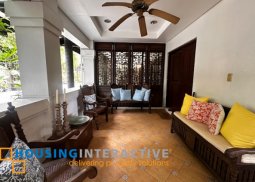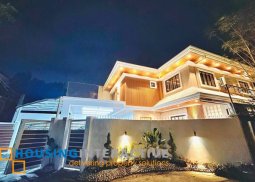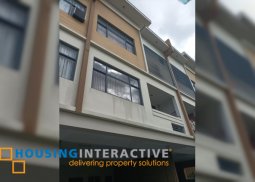Philippines' 1st Property Portal
house for sale in Mandaluyong
81 properties found Updated Dec 11, 2025
Updated Dec 11, 2025
- 3
- 1
- 3
- Wack Wack Greenhills, Mandaluyong
 Updated Dec 11, 2025
Updated Dec 11, 2025
- 6
- 6
- 4
- East Greenhills Subdivision, Mandaluyong
 Updated Dec 11, 2025
Updated Dec 11, 2025
- 5
- 4
- 5
- Mandaluyong
 Updated Dec 04, 2025
Updated Dec 04, 2025
- 4
- 3
- Mandaluyong
 Updated Dec 04, 2025
Updated Dec 04, 2025
- 2
- 1
- Mandaluyong
 Updated Dec 04, 2025
Updated Dec 04, 2025
- 4
- 3
- Mandaluyong
 Updated Dec 04, 2025
Updated Dec 04, 2025
- 4
- 1
- 3
- Mandaluyong
 Updated Sep 03, 2025
Updated Sep 03, 2025
- 3
- 2
- 3
- Mandaluyong
 Updated Aug 20, 2025
Updated Aug 20, 2025
- 4
- 2
- 4
- Mandaluyong
 Updated Jul 17, 2025
Updated Jul 17, 2025
- 4
- 2
- 4
- Mandaluyong
 Updated May 27, 2025
Updated May 27, 2025
- 3
- 2
- 2
- Mandaluyong
 Updated Jan 16, 2025
Updated Jan 16, 2025
- 3
- 2
- 3
- Mandaluyong
 Updated Jan 16, 2025
Updated Jan 16, 2025
- 3
- 2
- 3
- Mandaluyong
 Updated Jan 09, 2025
Updated Jan 09, 2025
- 4
- 3
- 3
- Hulo, Mandaluyong
 Updated Dec 26, 2024
Updated Dec 26, 2024
- 6
- 6
- Mandaluyong
 Updated Dec 12, 2024
Updated Dec 12, 2024
- 3
- 2
- 3
- Buenconsejo, Mandaluyong
House Properties for Sale in Mandaluyong City
Escape from the Mundane, Explore Mandaluyong
Mandaluyong City is a first-class, highly developed city in the National Capital Region of the Philippines. According to the 2020 census, it has a population of 425,758 people who own residential properties, while some rent in apartments and condominiums in and around Mandaluyong City. Located exactly east of Manila, it is well-known for the Ortigas Center, a commercial and business center that is partly under the jurisdiction of Pasig City. The city is bounded by Manila to the west, San Juan to the north, Quezon City to the northeast, Pasig to the east, and Makati to the south. It is also the 6th-smallest city in the Philippines with a heart-shaped land area of 11.06 km2 (4.27 sq mi).
Mandaluyong’s strategic location in the middle of Metro Manila makes it a highly sought-after area for both residential and commercial investments. Its proximity to major business districts such as Makati, Ortigas Center, and Bonifacio Global City (BGC) allows residents to enjoy convenient access to work, shopping, and entertainment hubs. This central location also facilitates excellent connectivity through major roads and public transportation options, including the MRT stations at Ortigas, Boni, and Shaw Boulevard.
Mandaluyong offers a diverse range of residential properties, from affordable townhouses and condominiums to luxurious houses in gated communities like Addition Hills and Dover Hill. The city’s real estate market caters to various budgets and lifestyles, making it an ideal place for young professionals, families, and investors.
Places to Visit Within and Around Mandaluyong City
Mandaluyong City proudly holds the title of the "Shopping Mall Capital of the Philippines," thanks to its concentration of several large and popular malls located in close proximity. These malls provide residents and visitors with a rich variety of shopping, dining, and entertainment options, making them vibrant social and cultural centers that enhance the urban lifestyle.
Shangri-La Plaza Mall
Known affectionately as “Shang,” Shangri-La Plaza Mall is the epitome of upscale shopping in Mandaluyong. It features an impressive selection of high-end fashion brands, luxury boutiques, and fine dining establishments. The mall caters to a discerning clientele seeking premium products and services, offering a sophisticated retail environment that perfectly matches the lifestyle of the city’s elite. Beyond shopping, Shangri-La Plaza also hosts various events and exhibitions, making it a cultural hotspot in the area.
SM Megamall
SM Megamall is a favorite destination for a wide range of shoppers, from the privileged to the mid-level society, especially those with fast-paced lifestyles. Strategically situated along the busy EDSA highway, it provides easy access for residents living in nearby apartments and condominiums. SM Megamall boasts an extensive array of retail stores, dining options, and entertainment facilities, including cinemas and event spaces. Its convenient location and diverse offerings make it a cornerstone of daily life for many Mandaluyong residents.
The Podium
Located in the bustling ADB Avenue within Ortigas Center, The Podium is a lifestyle mall that combines food, fashion, beauty, health, wellness, leisure, art, and entertainment under one roof. It features gourmet restaurants, designer boutiques, and wellness centers, catering to a sophisticated urban crowd. Art enthusiasts can enjoy the mall’s curated galleries, while book lovers can explore its well-stocked bookstores. The Podium also houses a state-of-the-art cinema, making it a hub for both culture and relaxation.
Robinson’s Galleria
Robinson’s Galleria is a landmark shopping mall located at the busy intersection of Ortigas Avenue and EDSA. Known for its historical significance and vibrant atmosphere, it is the flagship mall of Robinsons Land Corporation. The five-level complex hosts over 500 local and international brands, a wide variety of dining options, and essential service centers. Robinson’s Galleria serves a diverse crowd, including white-collar workers, students, and affluent residents from nearby apartments and condominiums. Over the years, it has continuously upgraded its facilities and expanded its offerings, making it a preferred venue for product launches and community events. The mall’s strategic location and dynamic environment contribute significantly to the lifestyle and convenience enjoyed by Mandaluyong’s residents.
Why Buy a House in Mandaluyong City?
Mandaluyong is home to reputable educational institutions such as Lourdes School of Mandaluyong, De La Salle Greenhills, and the University of Asia and the Pacific, ensuring quality education options for families living in the area. The city also boasts well-maintained parks, healthcare facilities, and recreational amenities, contributing to a high quality of life for its residents.
Strategic Central Location
Mandaluyong City is geographically situated at the heart of Metro Manila, giving it an unparalleled central advantage. This prime location provides residents with quick and easy access to major commercial and business districts such as Ortigas Center, Makati, and Bonifacio Global City (BGC). The city's extensive connectivity via main thoroughfares like EDSA, Shaw Boulevard, and new infrastructure like the Estrella–Pantaleon Bridge and the BGC–Ortigas Link Bridge significantly shortens commuting time, allowing for a better work-life balance compared to living in less-connected areas.
Strong Investment and Value Appreciation
Real estate like condominium properties in Mandaluyong is considered a highly stable and lucrative long-term investment due to the city's continuous economic growth and infrastructure improvements. The sustained demand for housing, particularly from the large workforce in nearby business hubs, supports high property values and strong rental yield potential. Investors can expect capital appreciation, with properties in the city often outperforming the Metro Manila market average, making a house and lot purchase a strategic financial move that builds equity over time.
Accessibility to Key Establishments
Living in Mandaluyong means having essential services and amenities within easy reach, a crucial factor for a convenient urban lifestyle. The city is a major commercial hub, often called the "Shopping Capital of the Philippines," with large, side-by-side malls like SM Megamall and Shangri-La Plaza. Furthermore, residents have easy access to reputable educational institutions (e.g., La Salle Greenhills, Poveda, University of Asia and the Pacific) and key healthcare facilities (e.g., Victor R. Potenciano Medical Center), ensuring all daily needs and emergencies are well catered for.
Greater Space and Flexibility
While Mandaluyong is also known for high-rise condominiums, choosing a house and lot—especially in the city's more residential barangays—provides substantially more living space, privacy, and flexibility. This property type is ideal for growing families as it offers larger floor areas, a private yard or garden, and the freedom to renovate, expand, or customize the home to personal tastes without the restrictions typically found in condominium living. It also provides an inherent feeling of ownership and stability that is highly valued by Filipino homeowners.
Where to buy house properties in Mandaluyong City?
With ongoing infrastructure developments and urban planning initiatives, Mandaluyong continues to evolve as a dynamic city that balances commercial growth with residential livability. Investing in house properties in Mandaluyong City means not only securing a home in a vibrant urban setting but also benefiting from the city’s promising future as a key player in Metro Manila’s real estate landscape.
Addition Hills
Addition Hills is one of the city's most prominent and desirable high-end residential enclaves, bordering San Juan City. It is known for its spacious lots, tree-lined streets, and high degree of exclusivity and security, often featuring large, older homes. It is a preferred location for established families due to its proximity to prestigious schools, including La Salle Green Hills, and its generally quiet, low-density atmosphere, despite being centrally located.
Barangka
Barangka refers to a collection of barangays (e.g., Barangka Drive, Barangka Ibaba, Barangka Itaas, Barangka Ilaya) that form a diverse and densely populated residential and commercial area near the Pasig River and Makati City. It is a highly accessible area, particularly along Barangka Drive, which is a major traffic artery. The area features a mix of mid-rise residential buildings, commercial strips, local markets, and traditional neighborhood houses.
Buenconsejo
Buenconsejo is typically considered a smaller, more traditional residential neighborhood found in the central part of Mandaluyong. It is characterized by tightly-knit local communities, a mix of old and new houses, and accessibility to local commercial centers along Shaw Boulevard and Boni Avenue. It offers a more local, neighborhood-focused atmosphere compared to the major commercial districts.
East Greenhills Subdivision
Part of the exclusive Greenhills area that straddles the border of Mandaluyong and San Juan, East Greenhills is an affluent and secure gated community known for its large, expensive homes and low-density residential zoning. It is home to the Wack Wack Golf and Country Club on its perimeter and is prized for its prime location, which offers quick access to the Ortigas CBD and the Greenhills Shopping Center complex.
Haig
Haig is a relatively central, mixed-use residential barangay that connects the main arteries of the city. It is generally characterized by mid-density housing, local establishments, and small-to-medium-sized residential properties. Its location provides easy access to key city areas like Shaw Boulevard and the Polytechnic University of the Philippines (PUP) in Sta. Mesa, Manila, via its main roads.
Hulo
Hulo is a dense, historic residential barangay located along the Pasig River, offering a distinct riverside community feel. It is known for its accessibility to the Mandaluyong-Makati Bridge (Estrella–Pantaleon Bridge), making it a key entry point to Makati City. The neighborhood is a mix of older residential areas, new vertical developments near the river, and local commercial establishments.
Wack Wack Greenhills
This is an ultra-exclusive and luxurious area dominated by the prestigious Wack Wack Golf and Country Club. The neighborhood features some of the most expensive and high-end real estate in the country, consisting of mansions within the secure subdivision area and numerous luxury high-rise condominiums that offer unobstructed, sweeping views of the lush golf course greens. It is synonymous with high-status, secure, and tranquil urban living.
Frequently Asked Questions About Buying a House in Mandaluyong City
How to Get to Mandaluyong City?
Mandaluyong City is highly accessible through various modes of transportation, making it convenient for potential homebuyers and visitors to explore the available house properties for sale. The city is well-served by numerous bus routes that run along EDSA, one of Metro Manila's major thoroughfares, connecting Mandaluyong to different parts of the metropolitan area. Additionally, the MRT system features key stations such as Ortigas, Boni, and Shaw Boulevard, which provide fast and efficient rail access to and from the city. For those seeking a more direct and comfortable ride, taxis and ride-hailing services are readily available, offering flexible options for navigating Mandaluyong’s vibrant neighborhoods and commercial centers.
Is it Safe to Live There?
Mandaluyong City, often dubbed the “Tiger City,” prioritizes the safety and security of its residents through proactive and continuous efforts by local authorities. The city government maintains a robust peace and order program, with regular patrols and vigilant traffic management to ensure orderly movement within its busy streets. Community policing initiatives and collaboration with barangay officials further enhance neighborhood safety, creating a secure environment for families, professionals, and investors alike. This commitment to maintaining public safety contributes significantly to Mandaluyong’s reputation as a desirable and trusted place to live, work, and invest in real estate.
House Properties in Mandaluyong City are highly desirable due to the city's strategic location in the middle of Metro Manila. Its unparalleled proximity to major business districts allows residents to enjoy convenient access to work, shopping, and entertainment hubs. Owning a house property here means securing a centralized, high-value asset with exceptional access to everything the National Capital Region has to offer.
HousingInteractive, the Philippines' first property portal, delivers property solutions for prime locations. Explore our exclusive House Properties in Mandaluyong City and secure your central Metro Manila address today!
How much is a house for sale in Mandaluyong?
In total, there are 81 house for sale in Mandaluyong. The average price for a residential property for sale in this location is ₱0 per unit. The most expensive sales price for a residential property here costs about ₱0 while the most affordable sales price is about ₱0.
You may find the most expensive and luxurious house for sale in Mandaluyong at Wack Wack Greenhills and East Greenhills Subdivision. While you can find classy yet affordable ones at Barangka, Buenconsejo and Addition Hills.
Below are the average sales prices according to the number of bedrooms in this location.
| Bedrooms | Average Floor Area/SQM | Average Sales Price | Average Cost Price/SQM |
|---|---|---|---|
| 4 Bedrooms | 279sqm | ₱0 | ₱0sqm |
| 3 Bedrooms | 197sqm | ₱0 | ₱0sqm |
| 2 Bedrooms | 82sqm | ₱0 | ₱0sqm |
These properties are fully equipped with the following amenities and unit features:
- Air conditioning
- Balcony
- Built-in wardrobes
- Cable TV
- CCTV
- Central air conditioning
- Den
- Driver's room
- Drying Area
- Elevators
- Entertainment room
- Fire Alarm
- Fire Exits
- Fire sprinkler system
- Flex
- Garden
- Gym
- Laundry Area
- Maid's room
- Parking Space
- Pet Friendly
- Powder room
- Smoke Alarm
- Smoke detector
- Swimming Pool
- Utility room
- Water Heater